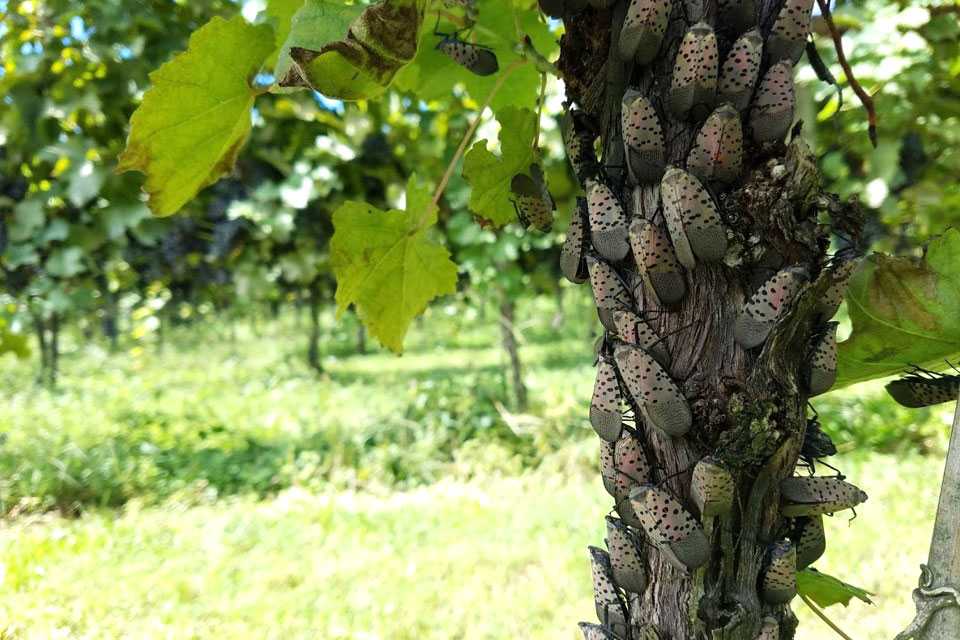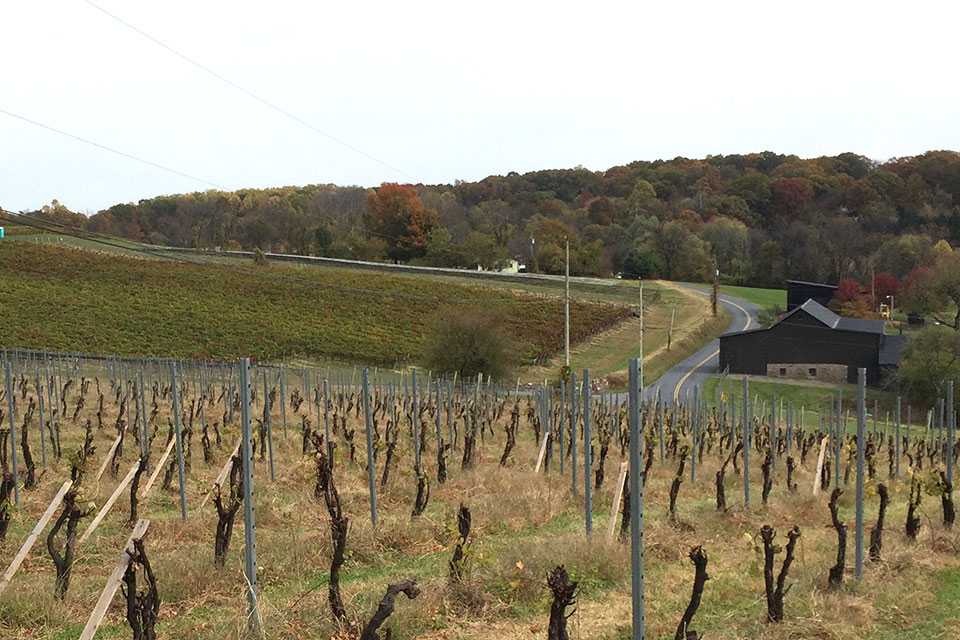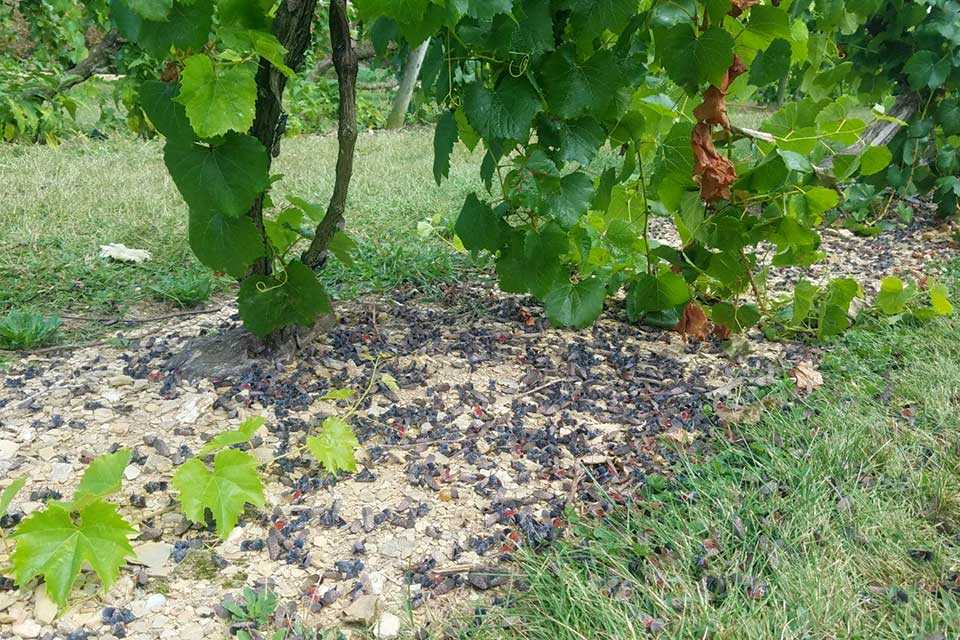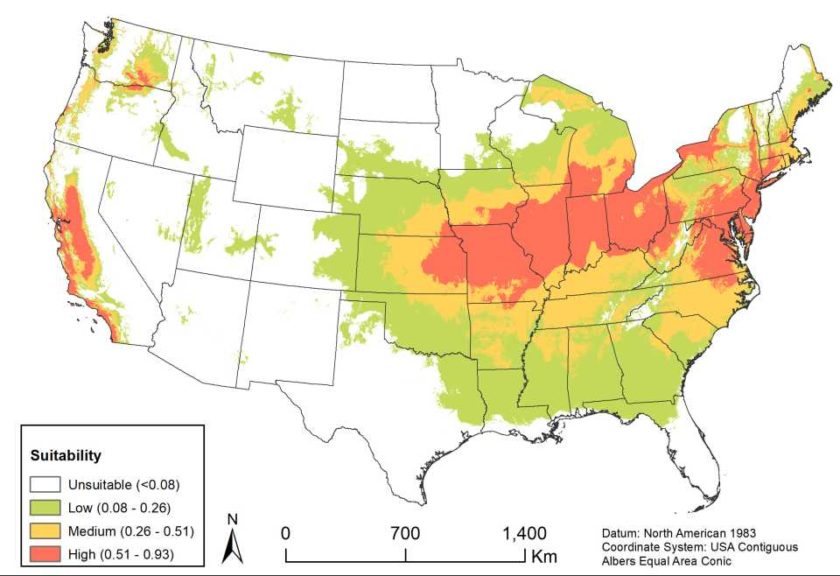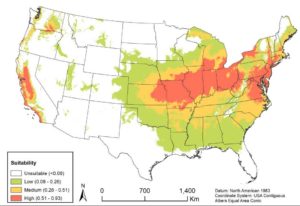Spotted Lanternfly a Major Threat to Fruit Crops in the Midwest?
Spotted Lanternfly (SLF) (Lycorma delicatula) is a new invasive insect that could turn the worlds of Midwestern grape growers upside down.
Some growers and homeowners in Pennsylvania, New Jersey, Maryland, Delaware, West Virginia, and Virginia have already discovered how devastating SLF is. In addition to grapes, SLF attacks fruit trees, hops, hardwood trees, and ornamental plants. This is why USDA has invested millions of dollars to slow the spread of SLF and research effective control measures in the northeast U.S.
Many grape growers in Ohio are getting quite nervous about SLF because the pest has been spotted in some Pennsylvanian counties along the Ohio border. Grape growers in other Midwestern states cannot relax since SLF can easily reach other states by trains, cars, trucks, planes, and a few other means.
What can be done to stop SLF from reaching your state?
Raise public awareness. It is important to raise public awareness of SLF in your state. Preventing SLF from coming into your state is always a good approach. Since we do not have millions in Ohio to fight this pest, Ohio’s grape industry has contributed around $50,000 toward an SLF survey and public awareness campaign. SLF ID cards were printed to help folks spot the pest. It is important to be able to identify all stages of SLF, including egg masses, immatures, and adults. Follow this link https://is.gd/OSU_SLF for an informative fact sheet on SLF identification. We need to spot SLFs and then kill them ASAP to prevent their spread.
Remove Trees of Heaven (Ailanthus altissima) near your vineyard. Tree of Heaven is SLF’s favorite host and will be a big draw for SLF. Once SLFs get established there, they will quickly find your grapevines and start attacking them. Since Tree of Heaven is an invasive plant species, its removal should not bother anyone. As a matter of fact, someone called Tree of Heaven “a devil in disguise.” Please refer to this fact sheet for detailed information on how to identify and permanently remove Trees of Heaven from your farm.
SLF = An Effective Grapevine Killer? SLF is a planthopper, not a fly. It has one generation a year. Female SLFs lay eggs in autumn. Eggs then hatch in spring the next year. After hatching and before becoming adults, SLF goes through four instars (Leach et al., 2019). SLFs damage grapevines by sucking sap from the phloem of the grape stems, cordons, and trunks. SLFs are voracious feeders. They can be present in extremely large numbers as adults in vineyards. SLFs can seriously weaken the grapevines so much that vines can be much more easily killed by other stressors, such as cold winter temperatures.
Some grape growers asked me if it would be a good idea to spray insecticides on grapevines when they know they do not have SLFs. Well, it would be unnecessary. You will still need to spray for grape berry moth, Japanese beetle, and spotted wing drosophila. Let’s hope we can stop SLF from entering your state. After all, you have enough to worry about anyway.
What if SLF slips into your state? Well, a few people in your state department of agriculture will have a very bad day. Hopefully, they will be able to eradicate it before SLF gets into your vineyards.
What if SLF does get into your vineyard? Then your nightmare will officially start. You will need every tool in your IPM box to manage the pest.
Management Measures
SLF egg masses will need to be scraped and then destroyed. Lorsban Advanced (chlorpyrifos, Corteva) at the dormant rate is highly effective in killing SLF egg, while JMS Stylet-Oil (paraffinic oil) has a lower kill rate (Leach et al., 2019).
SLF nymphs can be controlled with most standard insecticides. Insecticides with high knockdown activity work well against SLF nymphs, but residual activity is not necessarily needed (e.g., zeta-cypermethrin or carbaryl) (Leach et al., 2019). Spot treatments may be more desirable since SLF nymph infestations can be quite localized. Multiple applications may be needed.
SLF adults will most likely appear in vineyards beginning in late August but could arrive as early as late July based on studies at Penn State. The recommended insecticides for controlling the SLF adults are dinotefuran (Scorpion, Gowan Co.; Venom, Valent USA), bifenthrin (Brigade, FMC Corp.; Bifenture, UPL), thiamethoxam (Actara, Syngenta), carbaryl (Carbaryl, Sevin, Bayer), and zeta-cypermethrin (Mustang Maxx, FMC Corp.) (Leach et al., 2019). These insecticides can be quite effective in killing SLF adults. Make sure to follow PHI and other regulations. When in doubt, read the label.
SLF is a nasty, invasive pest. Now you know what to do to keep it out of your state and how to manage them if you are also unfortunate enough to get SLF in your vineyard.
Author note: Leach, H., D. Biddinger, G. Krawczyk, and M. Centinari. 2019. Spotted Lanternfly Management in Vineyards. Available online at https://extension.psu.edu/spotted-lanternfly-management-in-vineyards





